History
1869
On September 18, 1869, the first Chemical Society of Basel was founded as a subsection of the Trade Association of Basel on the initiative of Christoph Friedrich Goppelsroeder, who was Associate Professor at the University of Basel. Under his presidency, the society held regular meetings, which were attended by chemists as well as pharmacists and physicists from academia and the many small and medium size chemical companies that had been founded at that time in the Basel region. The meetings took place on the first Saturday of each month at 8 pm. After Goppelsroeder had left Basel in 1872 to take a position as director of the College of Chemistry in Mulhouse, the activities of the society dropped and were finally discontinued. The last documented meeting, which was attended by only three members and the invited lecturer, took place on January 11, 1873.
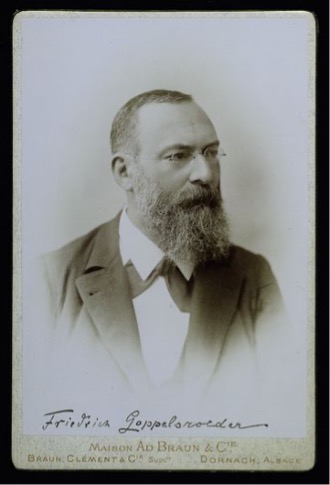
Christoph Friedrich Goppelsroeder (1837-1919)
1861-1870 “Öffentlicher Chemiker” (government officer in charge of chemical issues) in Basel, 1869-1872 Associate Professor at the University of Basel, 1872-1880 Director of the College of Chemistry in Mulhouse. Goppelsroeder is renowned for his pioneering work (together with Schönbein) on “capillary analysis”, an early version of paper chromatography.
1907
The history of today’s Basel Chemical Society can be traced back to 1907. At that time, Rudolf Nietzki and Hans Rupe (Professors in Basel), Emilio Noelting (Director of the College of Chemistry in Mulhouse), and Ludwig Gattermann (Professor in Freiburg i. Br.), who regularly met every two weeks on Saturday afternoon for informal discussions, decided to establish a Chemical Society of the Upper Rhine valley. Soon after its foundation in 1907, the University of Strassbourg joined the society. In the preserved accounts of the Basel section, covering the years from 1908 to 1914, more than 50 members are listed. The annual membership fee was 2.50 Swiss Francs. Many prominent chemists from the Basel region, as well as some Professors from more distant universities such as Richard Willstätter from ETH Zürich became members. The chemical companies in Basel were strongly represented, so the society became an important discussion forum between academia and industry. The Basel section and the Upper Rhine Chemical Society as a whole, which were run in a very informal ad hoc manner, thrived until the beginning of the first world war, which ended the transnational activities. Not much is known about the period from 1914 to 1924, when the Basel section was relaunched as an independent society under the name ‚Basler Chemische Gesellschaft‘ (Basel Chemical Society).
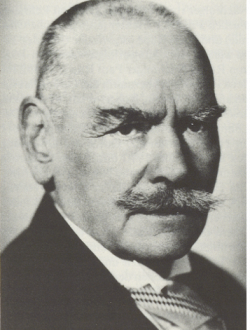
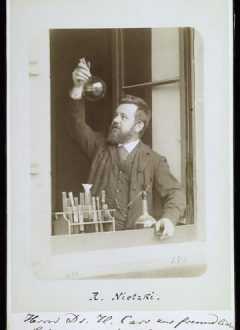
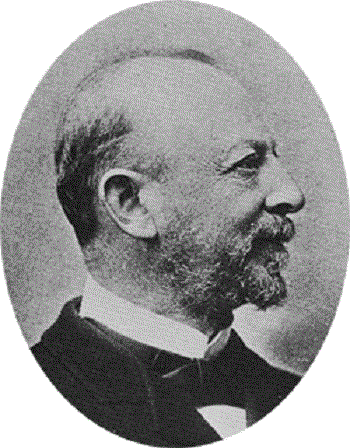
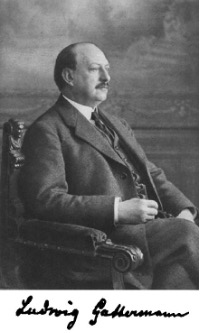
Founders of the Upper Rhine Chemical Society. From left to right: Hans Rupe1 and Rudolf Nietzki2 (University of Basel), Emilio Noelting1 (College of Chemistry, Mulhouse), Ludwig Gattermann3 (University of Freiburg i. Br.).
1 https://www.baslerstadtbuch.ch/stadtbuch/1982/1982_1668.html
2 http://www.digiporta.net/index.php?id=819921487
3 https://commons.m.wikimedia.org/wiki/File:L._Gattermann_2.jpg
1924
With its reinauguration in 1924, the Basel Chemical Society attained a more defined structure relying on six general guiding principles, which are in essence still valid today. However, its informal unbureaucratic nature, which kept administration to a minimum, was retained up to the present day.
Guiding principles from 1924
- The principal aim of the society is to promote chemical science and to foster personal contacts and knowledge exchange between chemists from academia and chemical companies in the Basel region.
- Every chemist in the Basel area may become a member by submitting his address to the board. Other persons, who are interested in chemistry, are also accepted as members.
- The society is chaired by a president, who is elected at the beginning of the summer semester for one year. Reelection for a second year is excluded.
- Together with the president, a vice president is elected for a one-year term.
- The members are invited to the meetings by mail and by publicly posted programs at the university and chemical companies. The costs for printing and mailing the invitations and cleaning of the meeting room are covered by voluntary donations.
- The society may invite chemists from other Swiss cities and from abroad as lecturers. The incidental costs are also covered by voluntary donations.
Hans Rupe, who held the chair of organic chemistry at the university of Basel from 1912 to 1937, and Paul Ruggli, associate professor for dye chemistry, who later on became successor of Rupe, seemed to have played an active role in this relaunch. Since the society did not employ any administrative staff and the presidency changed from year to year, documentation of its activities is scarce. Neither records of the meetings nor names of the presidents in this early period between 1924 to 1941 are available. However, a complete list of the presidents from 1942 to 1983 was published in a historical account on the occasion of the 75th anniversary of the Basel Chemical Society. It shows that the presidency alternated each year between academia and industry, a tradition that is still observed today. Among the many prominent industrial chemists who served as presidents are Otto Isler, known for the syntheses of vitamin E and A and Andor Fürst, whose work formed the basis of the Fürst-Plattner rule. Thanks to the generous support of the thriving chemical and pharmaceutical companies in the Basel area, the society enjoyed a comfortable financial position up to the present day. This made it possible to maintain a high-quality program with prominent lecturers from all over the world
2019
The 30th of January 2019 marked another new beginning of the Basel Chemical Society as the president Patrick Schnider (Roche) proposed together with the longstanding secretary Olivier Loiseleur (Syngenta) a new organizational structure, including a board, comprising of Professors from the University of Basel as well as a representative from each of the major Basel chemical and pharmaceutical companies. To improve visibility and share information a webpage and LinkedIn representation was started alongside a new mission statement which stayed faithful to the original guiding principles from 1924. Financial support which was until 2019 mainly provided by the „Kontaktgruppe Forschung“ has now shifted to the individual companies. The Basel Chemical Society is very grateful for the longstanding and generous support of Lonza, Idorsia, Syngenta, Novartis and Roche.
New Mission Statement:
For more than a century, the Basel Chemical Society has strived to foster interactions and knowledge exchange among academic and industrial chemists in the Basel area and to connect them globally by hosting professional events such as lectures, symposia, and informal meetings.
